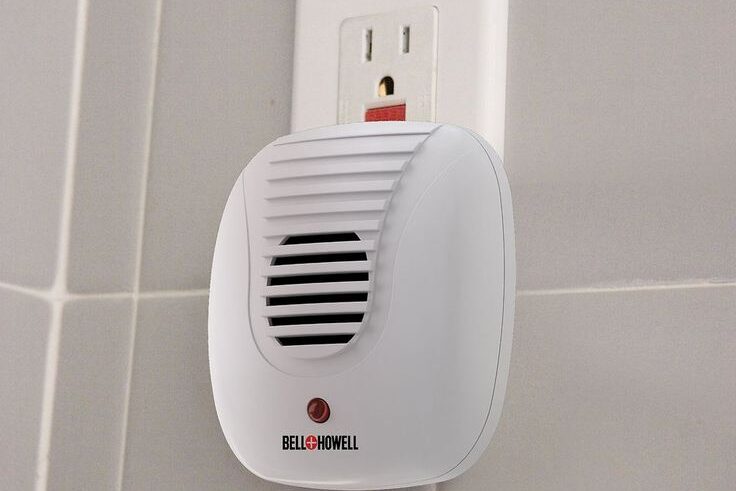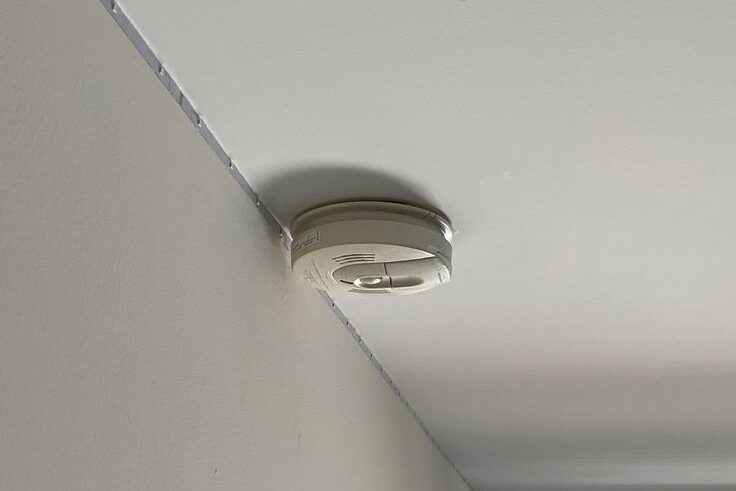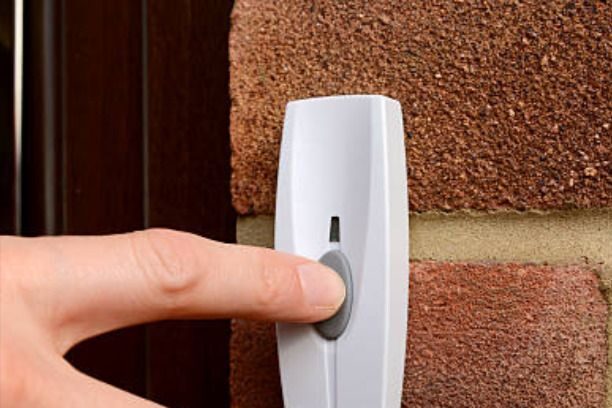1. Lingering Vacuum Hum

Even after the vacuum is switched off, its lingering hum, residual motor vibe, or even its scent can bother dogs. Given their acute hearing, dogs can sense fading low-frequency hums that seem subtle to us. Experts note that this lingering sound, combined with environmental change, can keep a dog uneasy long after the vacuum stops. Behavior varies widely: one dog might sprint away, another bark defensively, while a relaxed pooch might nap through it all. Owners have found success using desensitization starting with the vacuum off and gradually building up exposure rewarding calm behavior at each stage. Whether it’s routine cleaning or sudden appliance shutdown, some dogs just stay on edge.
2. Ultrasonic Repellers

Many homes now use plug-in pest or rodent repellents that emit ultrasonic frequencies sounds humans can’t hear but dogs can. These high-pitched tones (often 20–65 kHz) can be uncomfortable or disorienting for dogs, even if we never notice them. Vets and pet behaviorists suggest that when dogs suddenly seem anxious indoors, these devices could be the hidden culprit. Dogs respond in different ways: some whine or bark at the device, others freeze, shake, or retreat away from it. While manufacturers claim they’re safe, experts warn their effectiveness against pests is questionable and they may still stress pets. If you notice anxious behavior around plug-in gadgets, test by unplugging or relocating them to see if your dog calms.
3. Whining Chargers & Adapters

That soft whining you sometimes hear from phone or laptop chargers? You may dismiss it, but your dog’s hearing doesn’t. Some adapters emit ultrasonic whines (20–45 kHz) that fall just above our audible range yet dogs pick them up easily. Even a steady but faint hum near their resting spot can cause dogs to seem restless, fidget, or retreat to quieter corners. These subtle electronic noises often go unnoticed by us but are loud enough to irritate or unsettle dogs. It’s worth testing: unplug chargers from sockets and observe if your pet relaxes or returns to normal behavior. You might just uncover a hidden trigger affecting their comfort at home.
4. Silent TVs (When Muted)

Even a muted TV emits electric hums and high-frequency components. Dogs, with hearing up to around 45 kHz, pick up these signals clearly. That “silent” background noise LED components, power boards, coils can be irritating, especially in quiet households. Dogs may suddenly stop lounging during silent TV time, lift their heads, pace, or stare at blank screens. It might look like they sense ghosts, but it’s likely electronic noise. Try turning off the TV completely instead of muting it, or using power-saving standby mode to reduce background emissions and see if it eases their distress.
5. Smoke Alarm Chirps

Those brief beep-beeps from a low-battery smoke detector are a genuine stress trigger for dogs. Studies show high-frequency intermittent noises like these chirps are more anxiety-inducing than continuous noises. Behaviorists report dogs often panic at the sound, running to hide or exhibiting trembling or panting. Because these inject anxiety into their safe environment, it’s wise to replace smoke alarm batteries promptly and keep detectors out of dogs’ usual spaces. That quick chirp is more than a nuisance; it could trigger a stress response that lingers long after it’s over.
6. Cooling Buzzes Microwave & Oven

After microwaves or ovens finish, they often emit ticking, buzzing, or humming as electronics power down. These aren’t loud to us, but dogs detect them easily and their unpredictable fading pattern may signal something “unfinished” or unsettling. Owners may notice dogs jumping up or barking just as the microwave stops, then pacing as the device cools. To reduce this, stand away from your dog while appliances finish, or consider quieter kitchenware. Understanding that these small sounds can linger and affect pets is the first step toward keeping them calm.
7. High‑Pitch Phone Alerts

Phone notifications may sound quiet or even pleasant to us, yet dogs can recognize the ultrasonic pitch hidden within. Many owners confirm their dogs bolt away or freeze following certain alert tones, even when TV or ringtone sounds cause no reaction. Some notification frequencies mimic the warning beeps of alarms, triggering an instinctive “uh‑oh” response. To ease their anxiety, try swapping to softer, lower-frequency notification tones or switch your phone to vibrate-only in your dog’s presence. If your dog freezes when your phone dings, this subtle swap can make a big difference in their comfort level.
8. Doorbell Signals

Whether it’s a real doorbell or a virtual chime from a smart doorbell, many dogs link it to the arrival of strangers, an event often filled with high emotion and barking. They associate that distinct “ding-dong” or chime with excitement or stress, even if no one is at the door. The unpredictability of timing and visitors makes the sound especially triggering. Behaviorists advise training your dog to stay calm when the doorbell rings: start by playing the sound softly while giving treats or asking them to move to a specific spot. Gradually increase the volume and timing so your dog learns that a “ding” doesn’t always mean chaos but maybe just a calm moment rather than a guest.
9. Plastic or Foil Crinkles

That sharp ripping or crinkling noise when you open a snack bag or cling wrap can make a dog jump or bolt. These sudden, high-frequency sounds startle even the calmest pups; they aren’t expecting that crisp rip right behind them. To help them adjust, owners can desensitize by opening snack bags several times a day without offering food. Once the sound becomes familiar, reward calm behavior to reinforce that it’s no big deal. Over time, these everyday noises lose their “threat” label in your dog’s mind.
10. Buzzing Wearable Devices

Any gadget with vibration like a watch alarm, fitness tracker, or phone on silent produces a buzz that might seem muted to us but loud to dogs. The irregular rhythm and proximity to their ears can startle them, especially during rest or sleep when their senses are on alert. Try placing vibrating devices away from your dog’s resting area or set them to gentler, slower pulses. Monitoring their reaction if they suddenly jerk awake or flinch you’ll know it’s time to adjust. A simple change in placement can reduce stress and maintain their peace.
11. Lawn Equipment Noise

Leaf blowers and similar yard gadgets can produce sustained noise levels between 95–115 dB louder than a motorcycle or power tool and their erratic, rushing sound can feel overwhelming to dogs, even from afar. With hearing far more sensitive than ours, dogs may perceive these drones as a threatening roar, triggering stress responses such as panting, pacing, hiding, or barking. This isn’t just noise; it’s an environmental assault on their senses. Owners sometimes overlook the impact of occasional yard work, but for noise-sensitive dogs, even brief exposure can be distressing. To help, consider timing walks and playtime to avoid active equipment, keep your dog indoors with doors and windows closed while gardening is ongoing, or use noise-masking strategies like running a fan or playing low-frequency music to dampen the blowers’ roar. Awareness is key to what seems routine to us and may feel scary to our dogs.
12. High‑Frequency Music Tones

Some music especially digital tracks with very high or shifting frequencies can include tones dogs notice even if humans don’t. Research confirms that dogs sense a broader sound spectrum (67 Hz to 45,000 Hz) than we do. While carefully crafted canine music can be calming, regular high-frequency tones in our playlists may inadvertently stress them. Studies show that classical or heavy metal music, with its dynamic shifts and high-pitched components, sometimes raises stress indicators in dogs. To limit this, replace your usual playlist with species-specific soothe-music or smooth, low-tempo tracks with minimal high-frequency content. You might even explore “canine music” made for pets. Studies indicate it can effectively reduce stress and cortisol levels. Your tunes may be peaceful to you but loud or piercing to their ears.
This story 12 Sounds That Drive Dogs Crazy, Even If You Can’t Hear Them was first published on Daily FETCH


